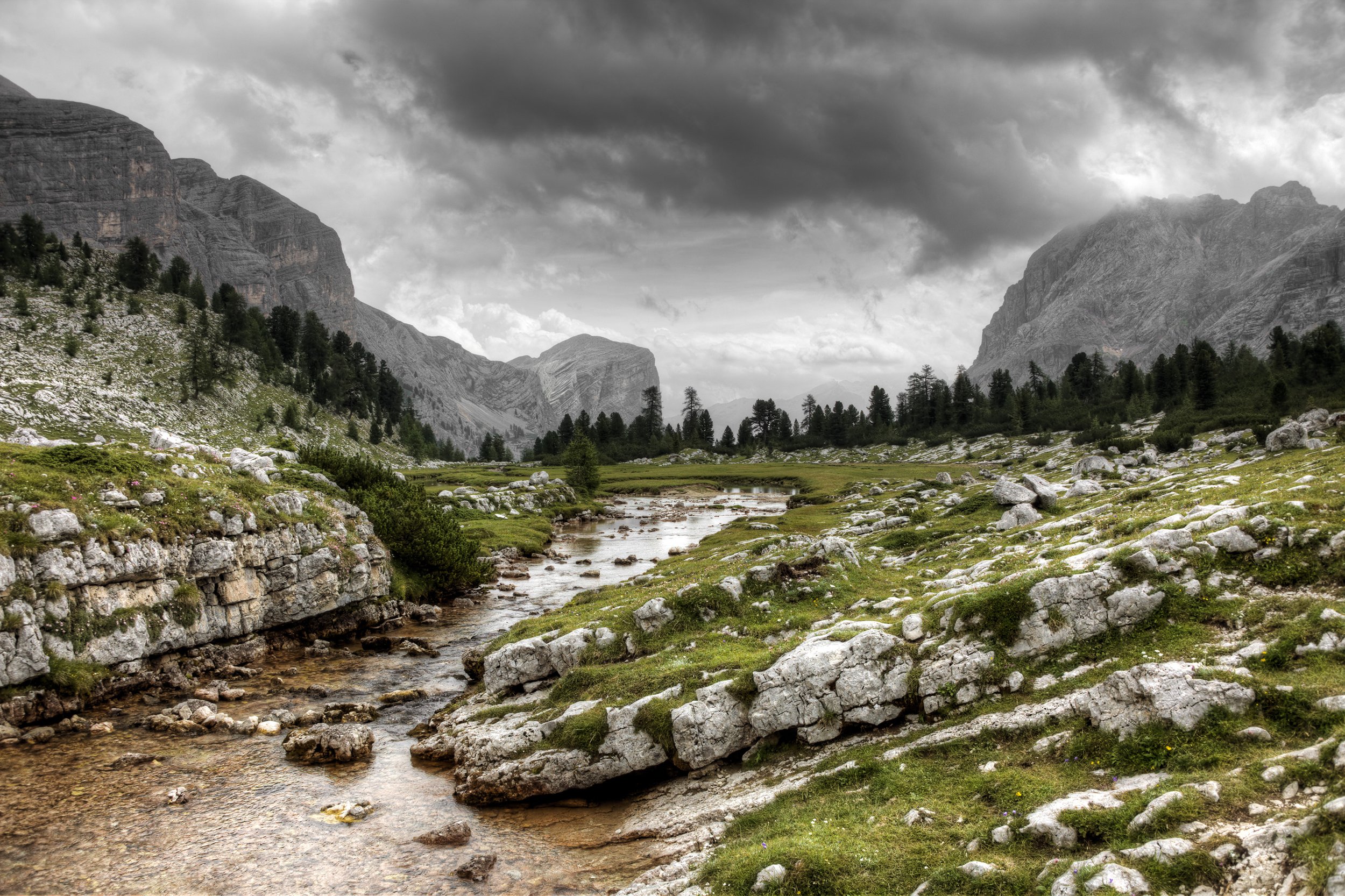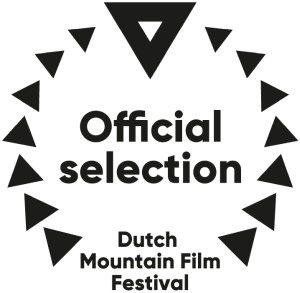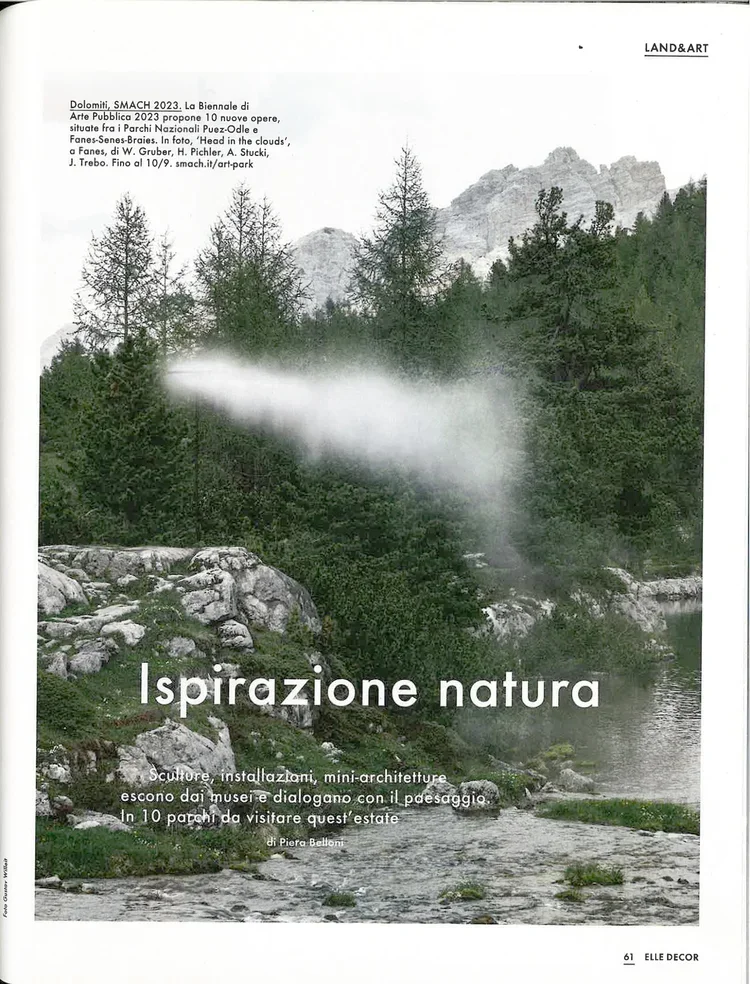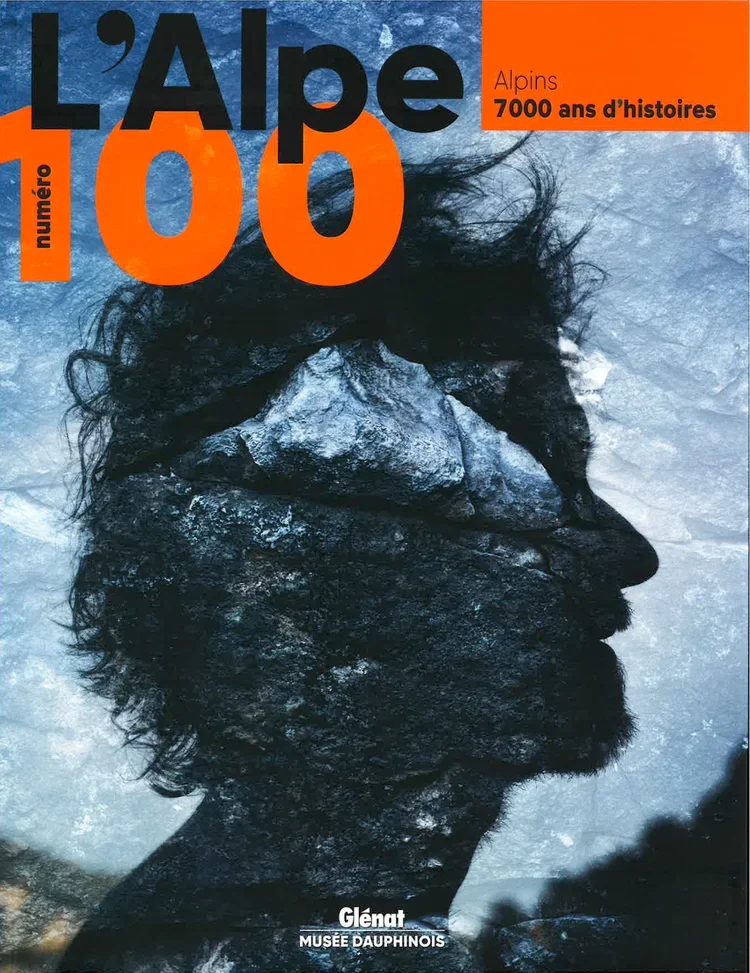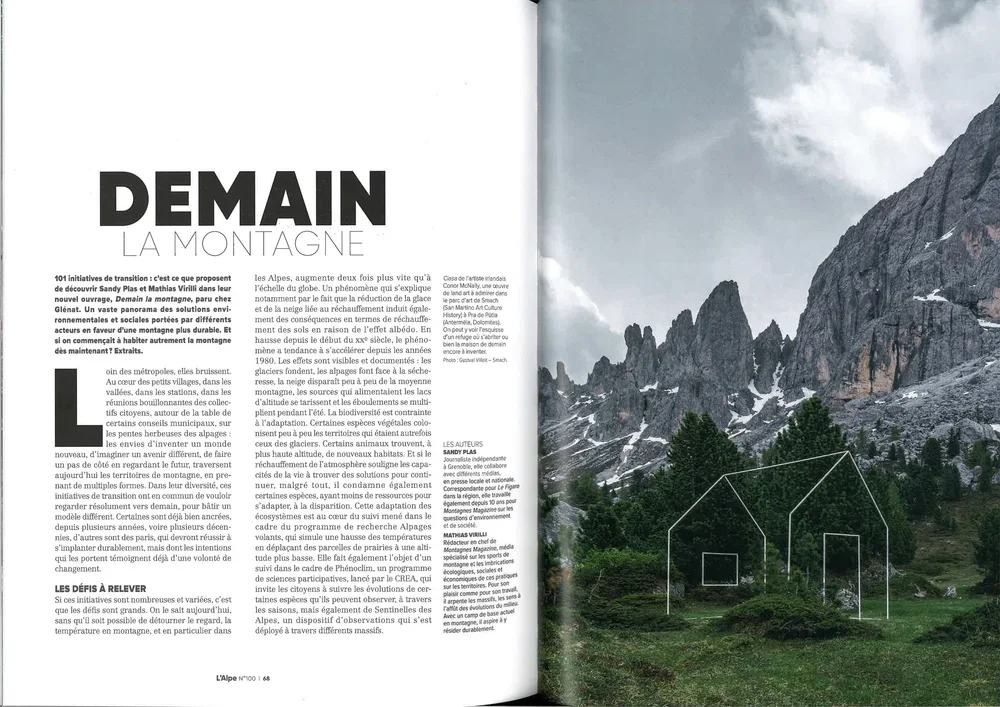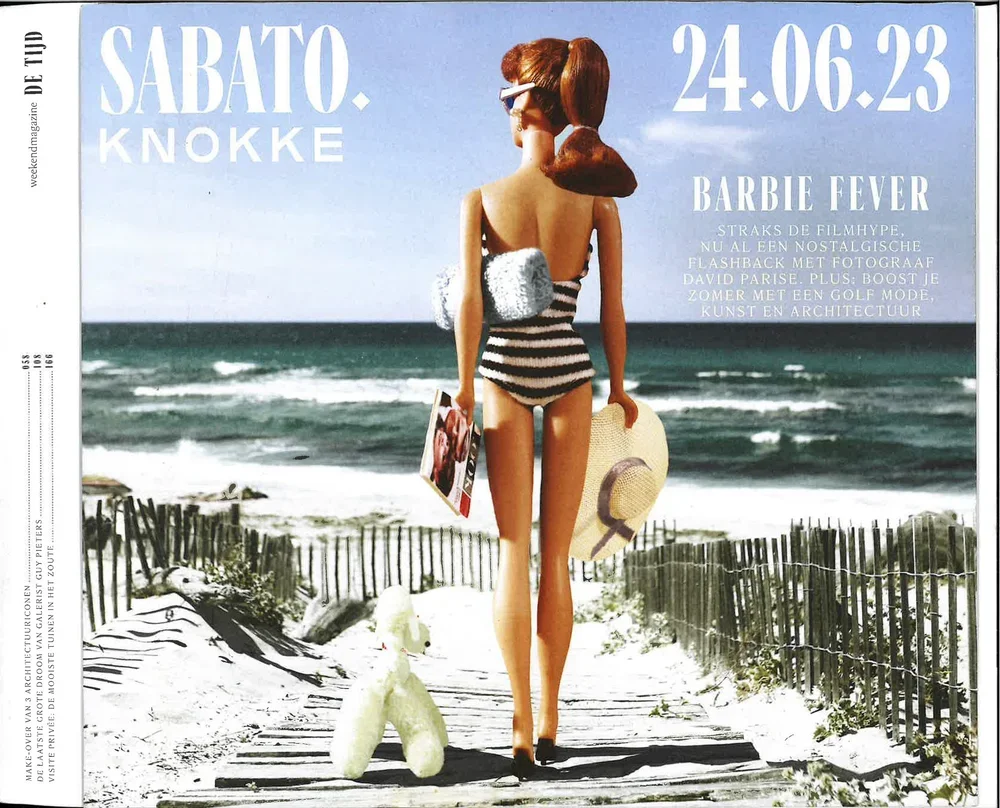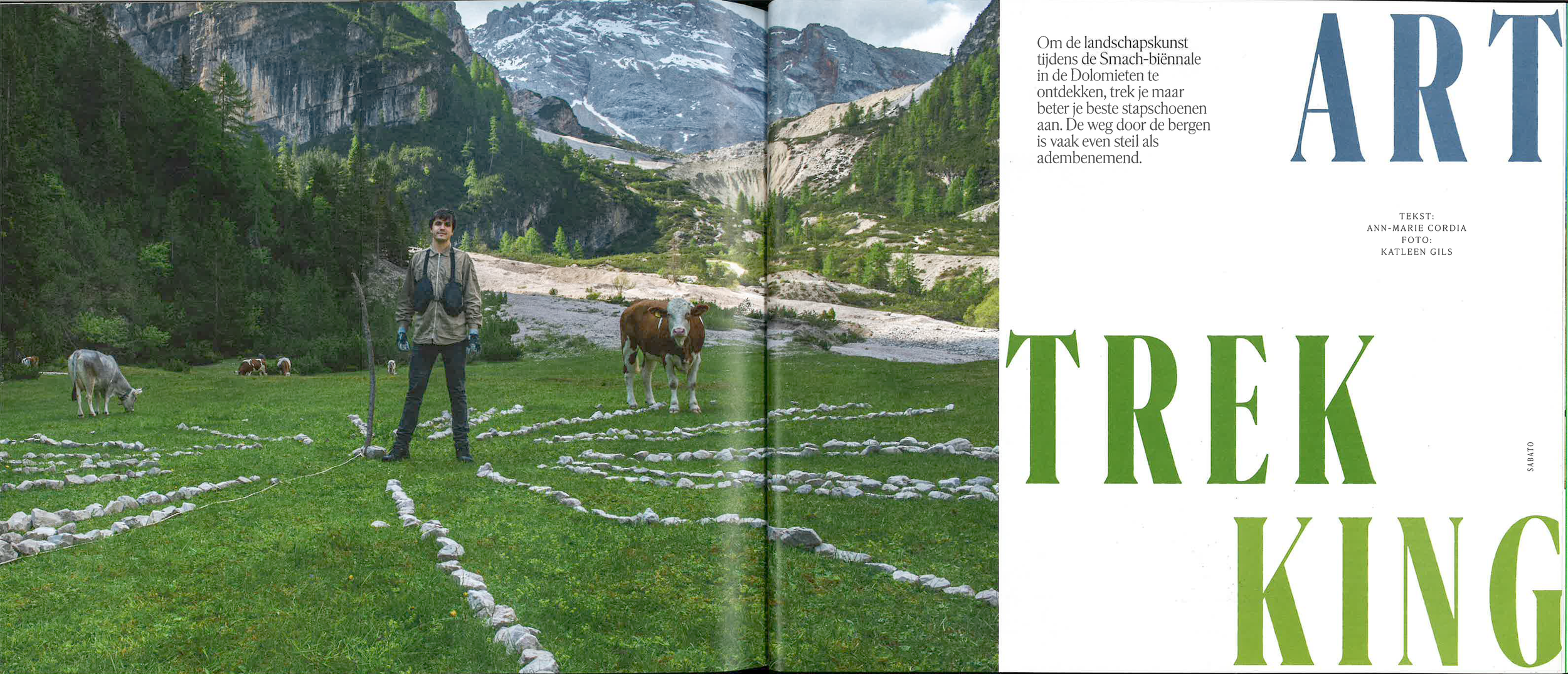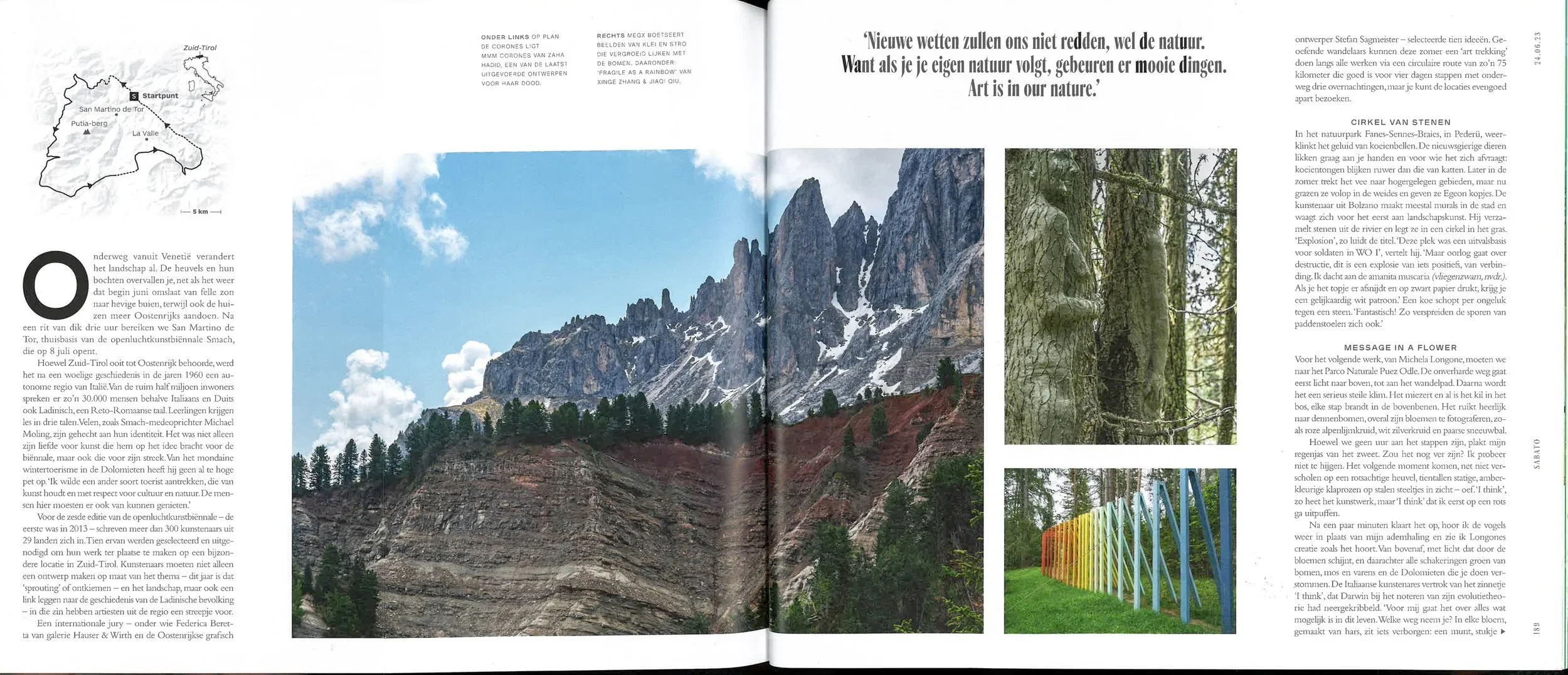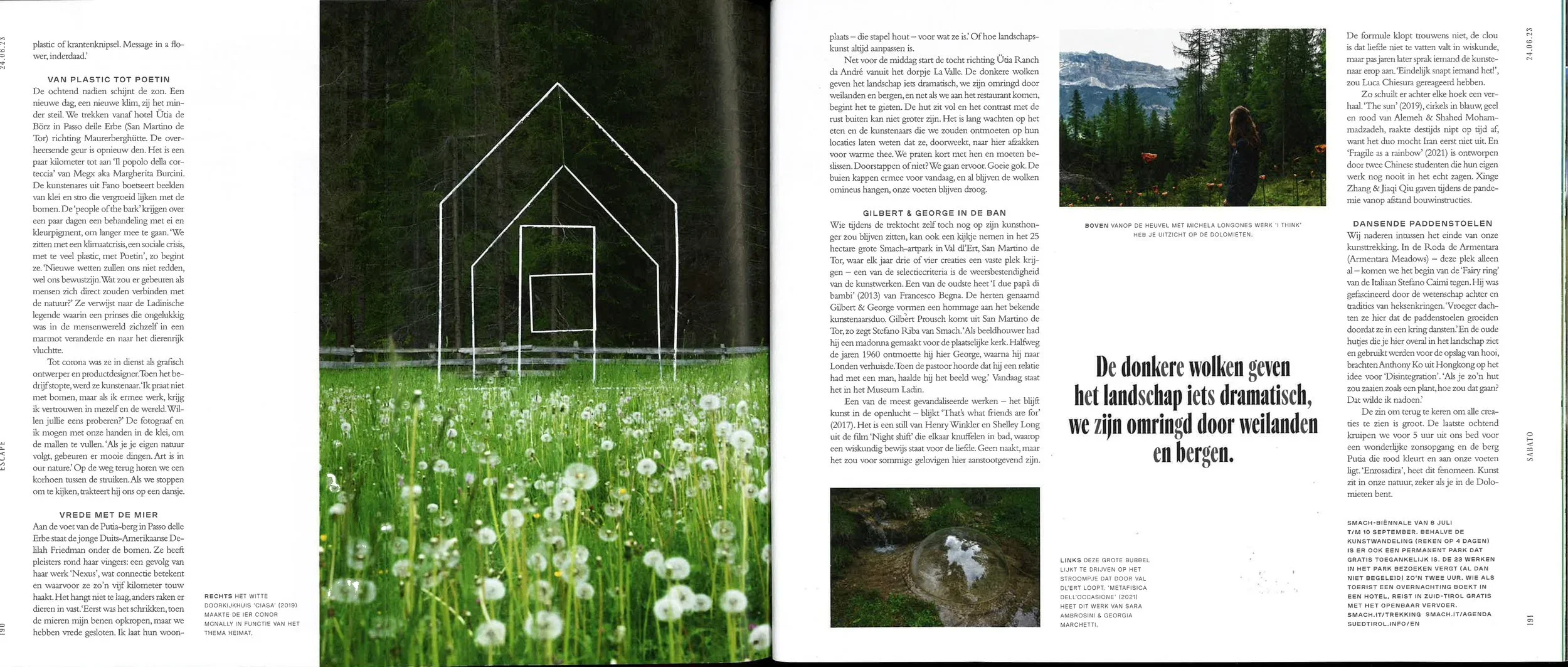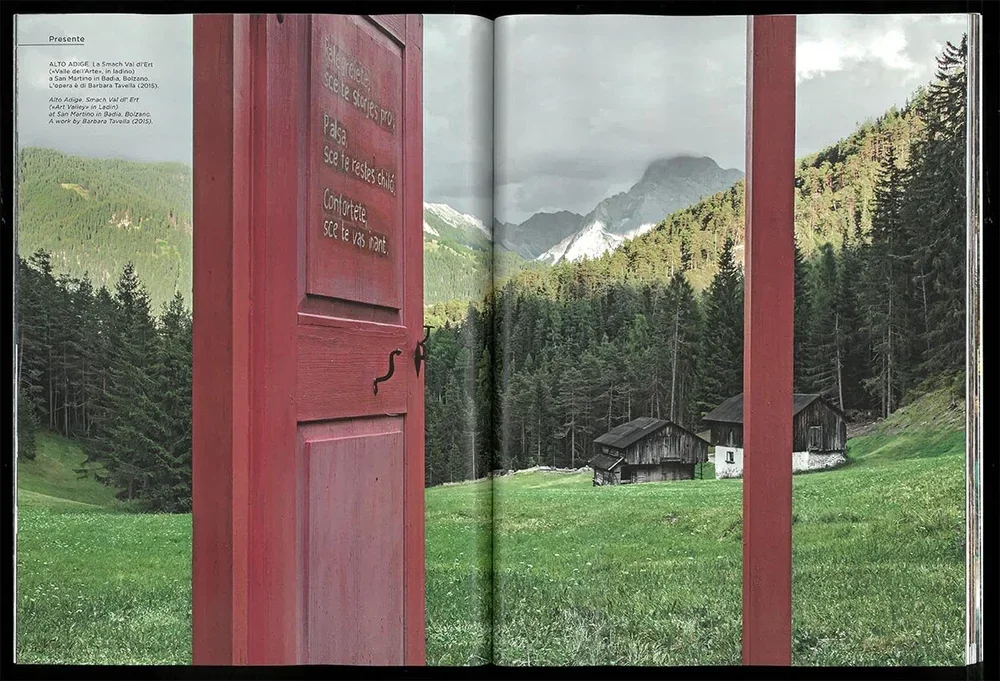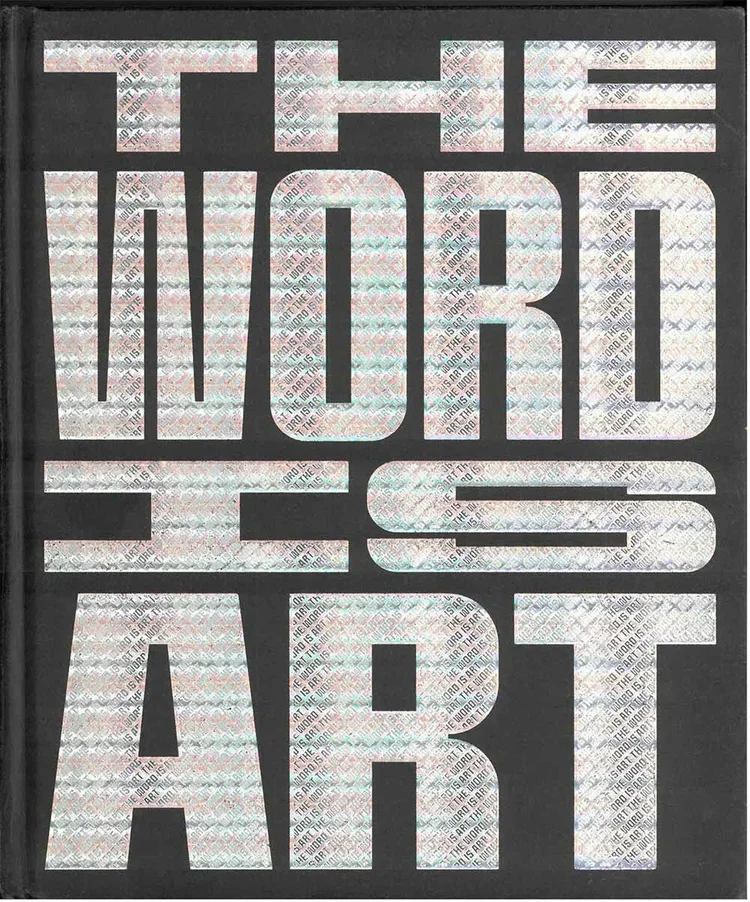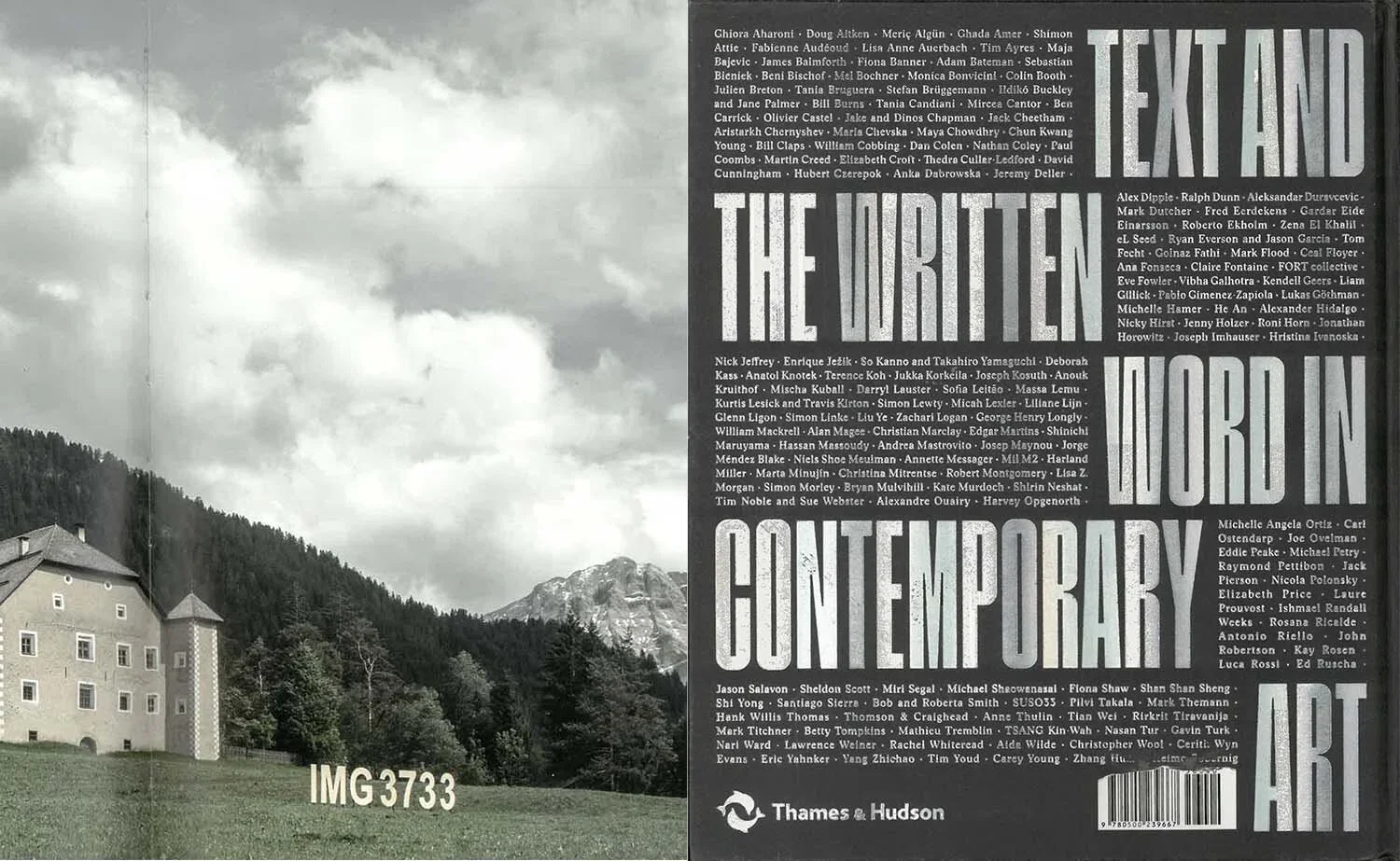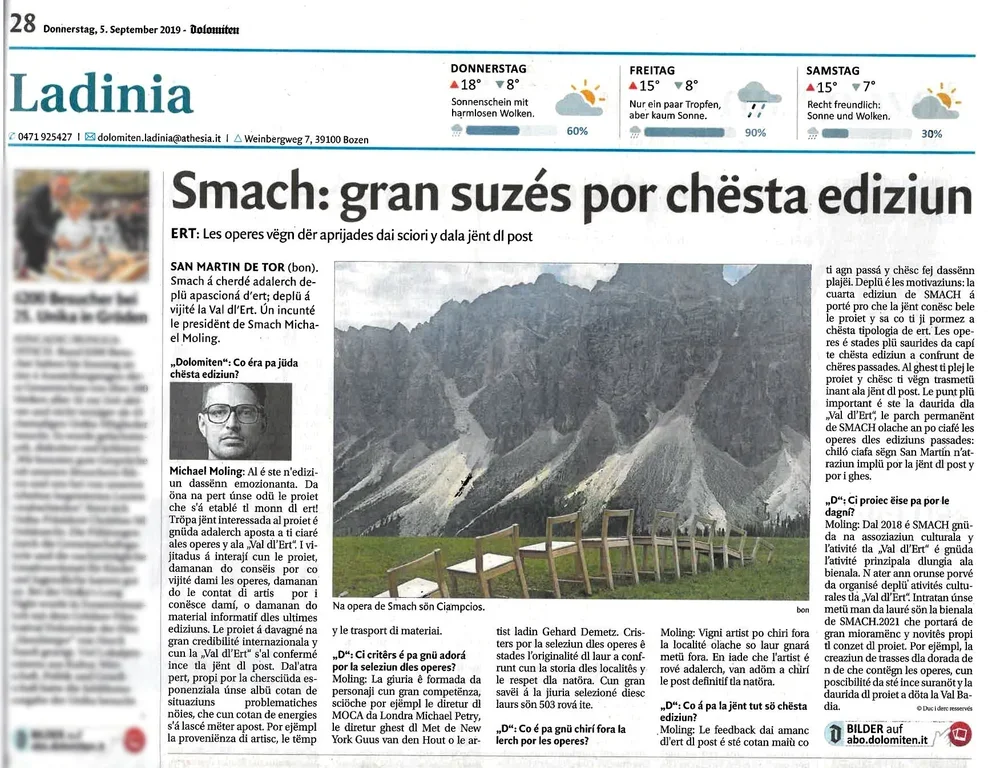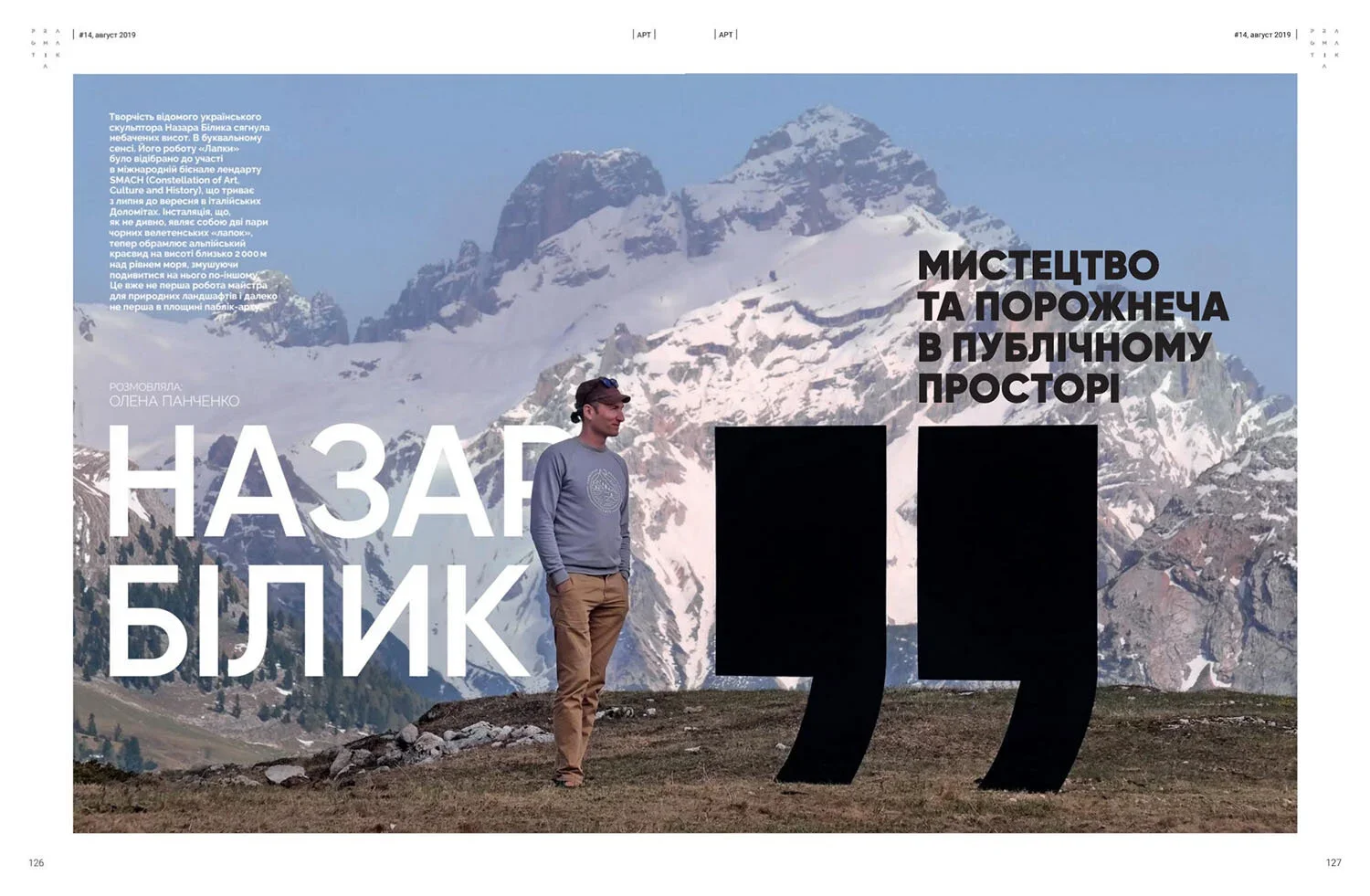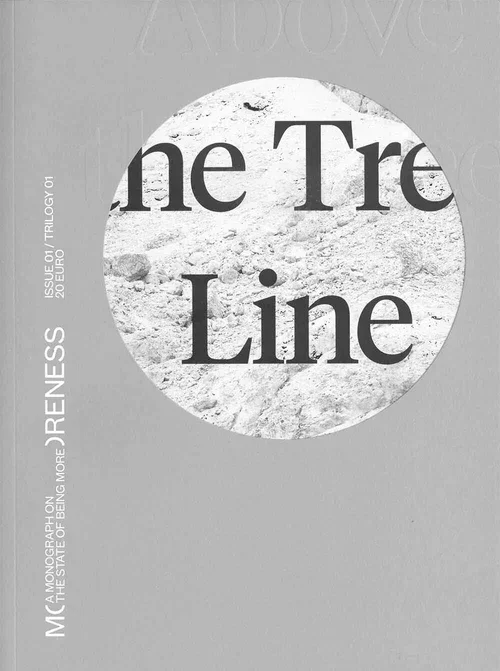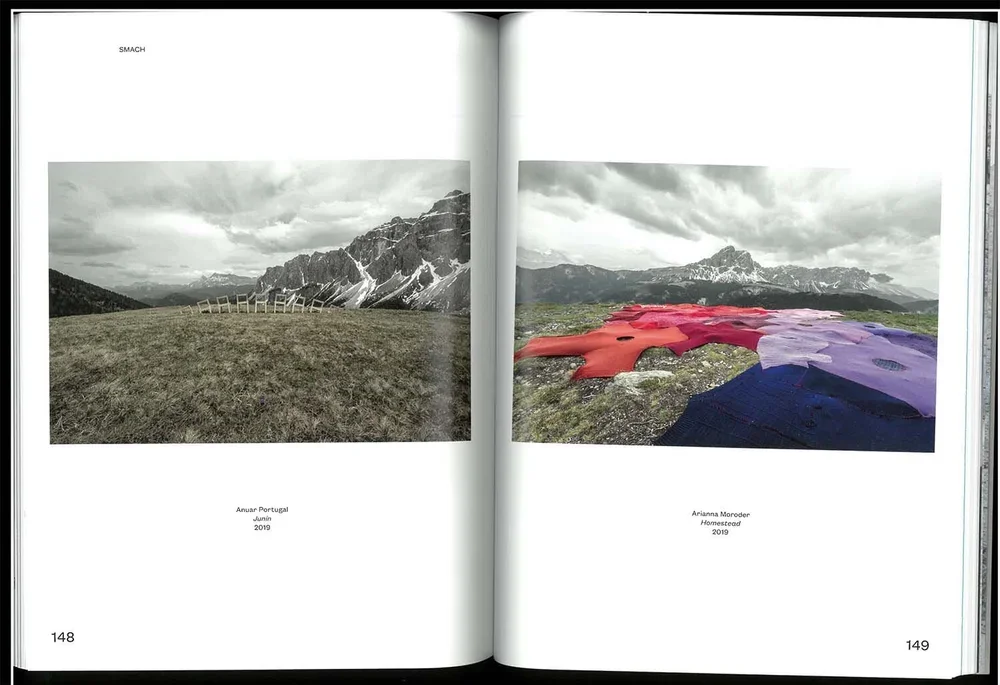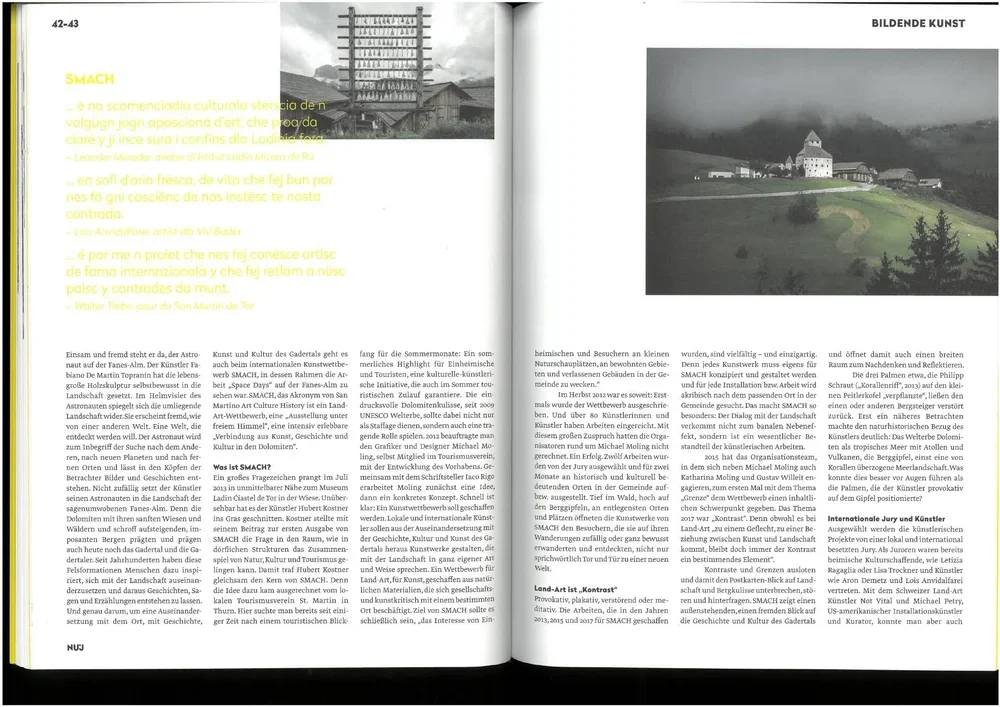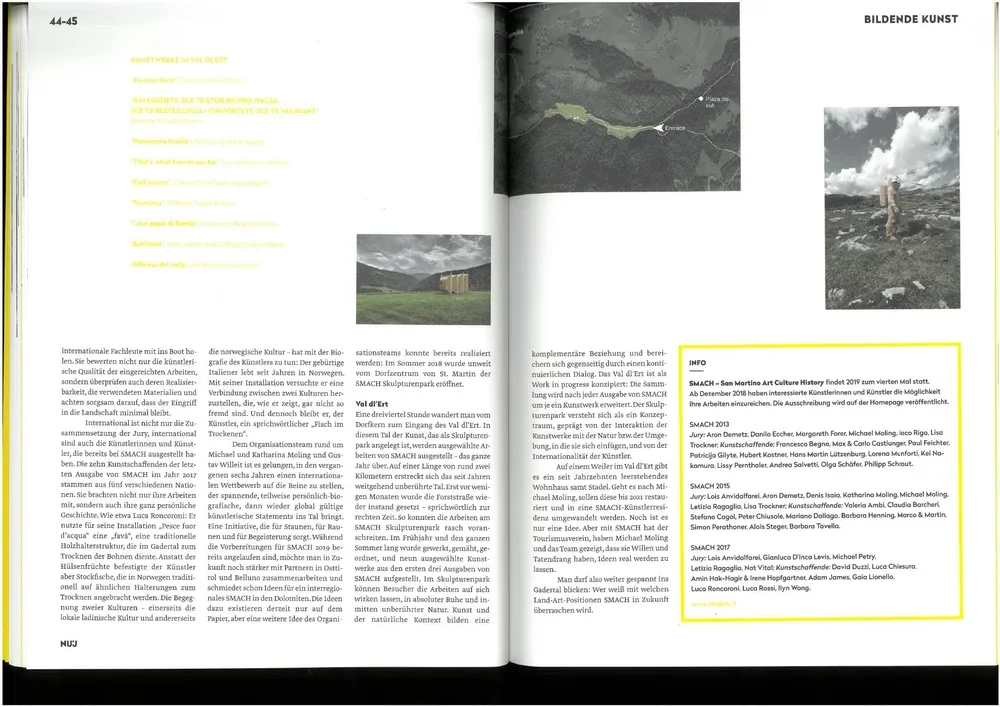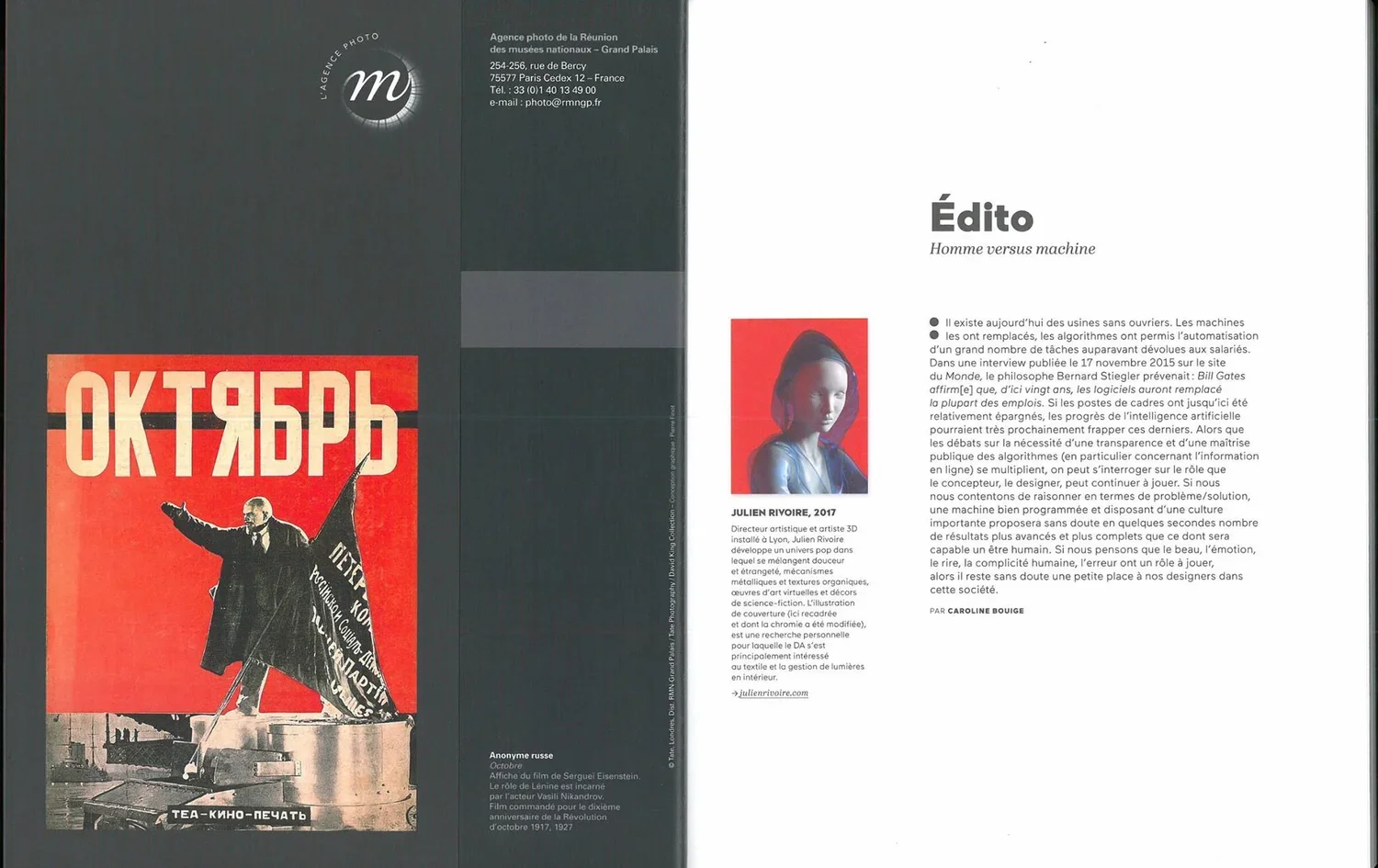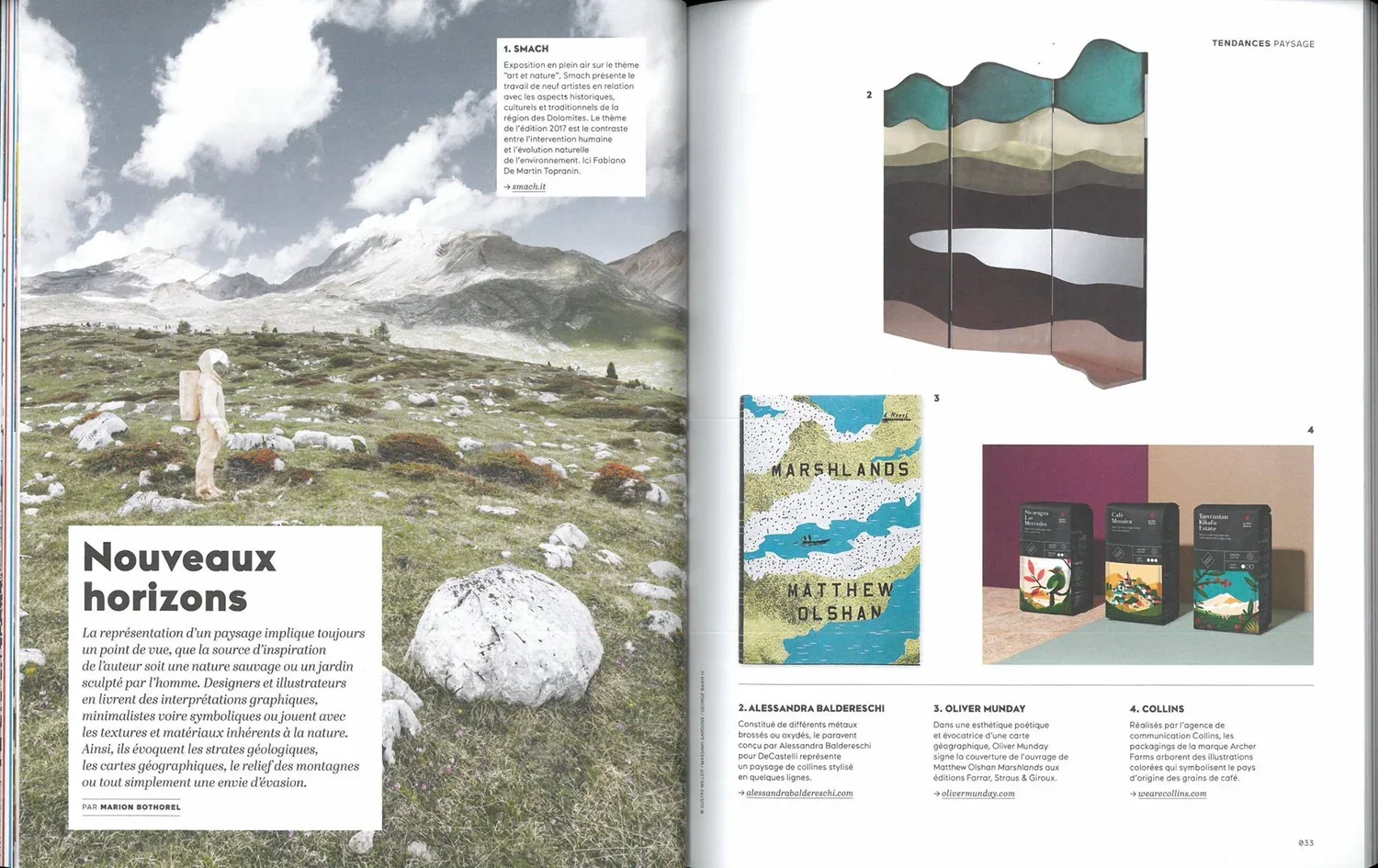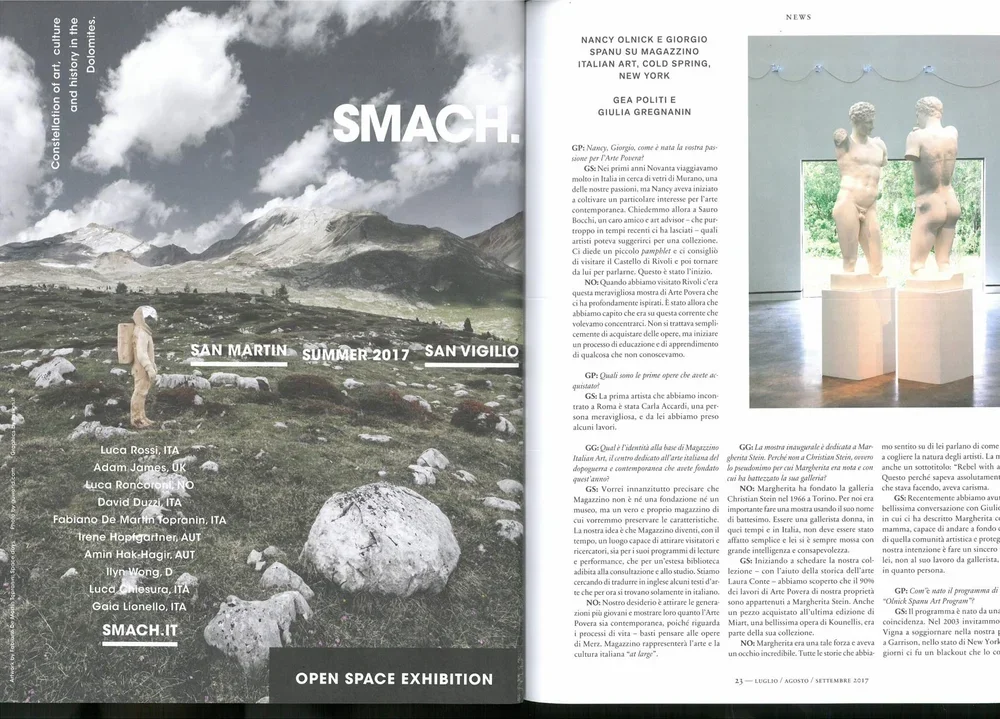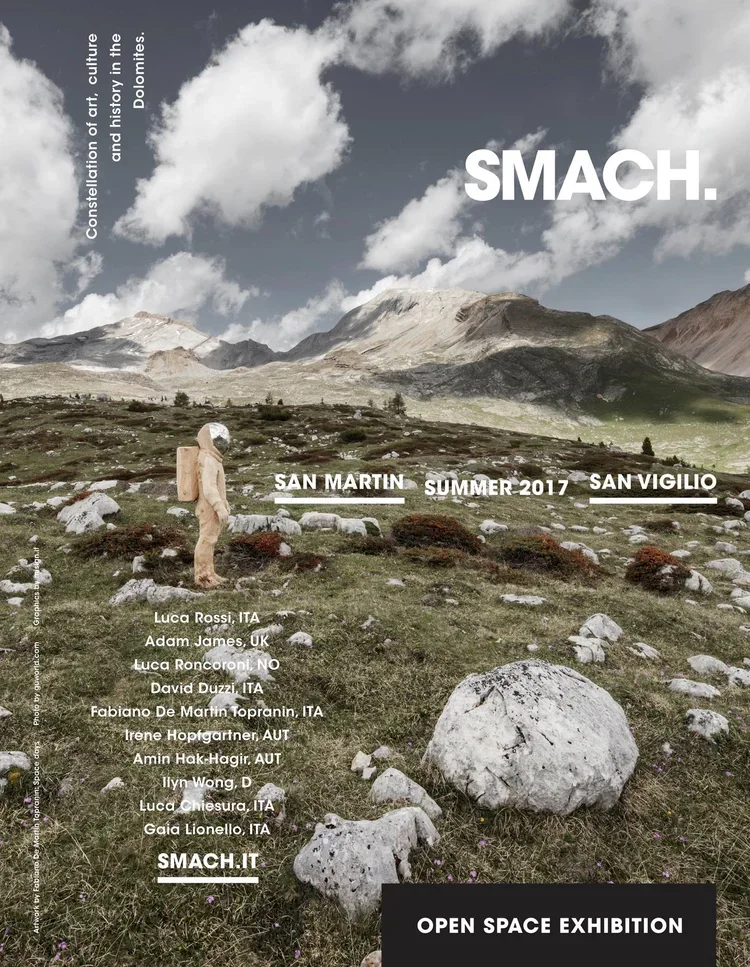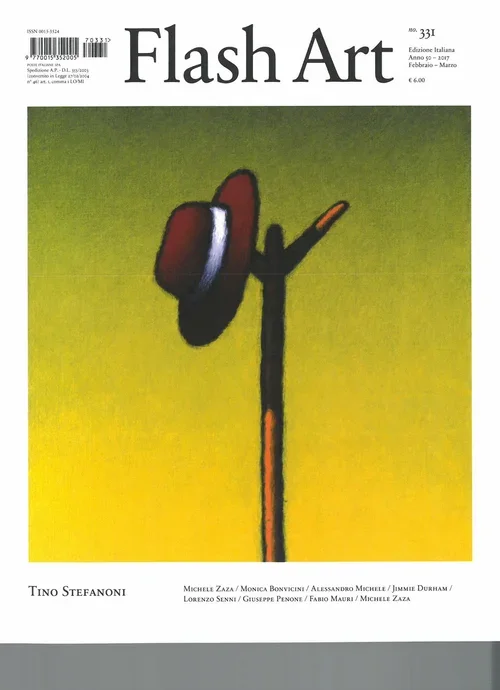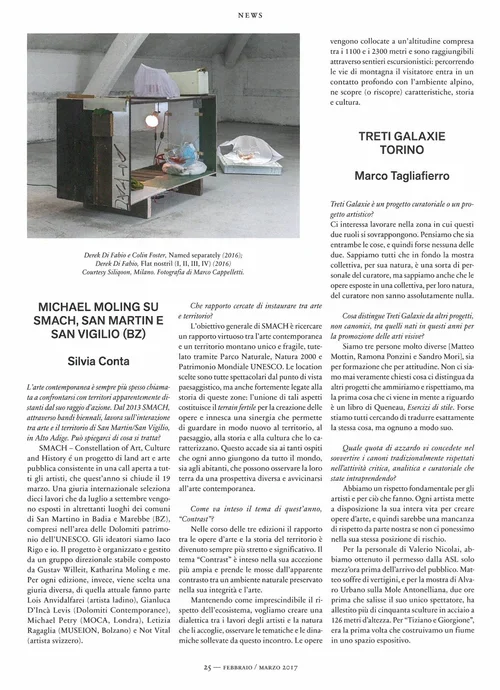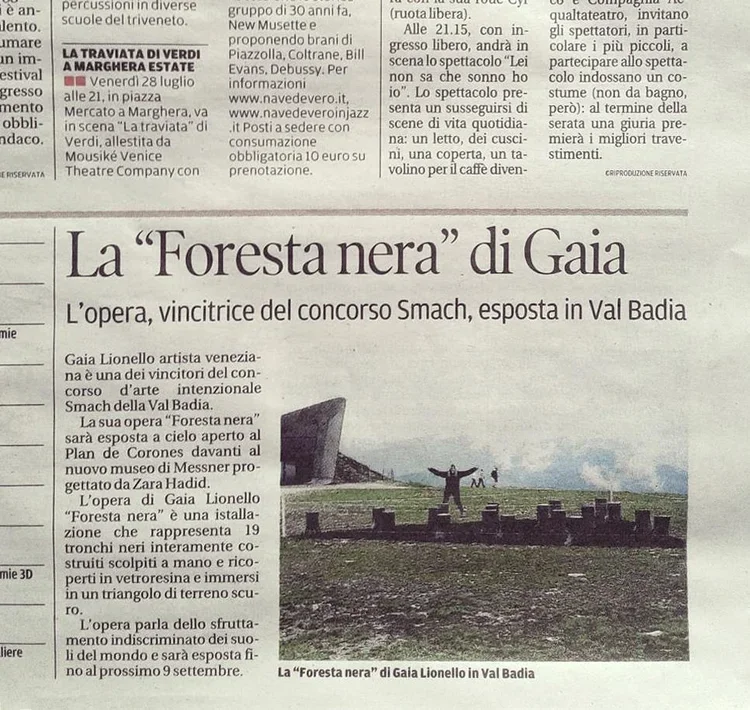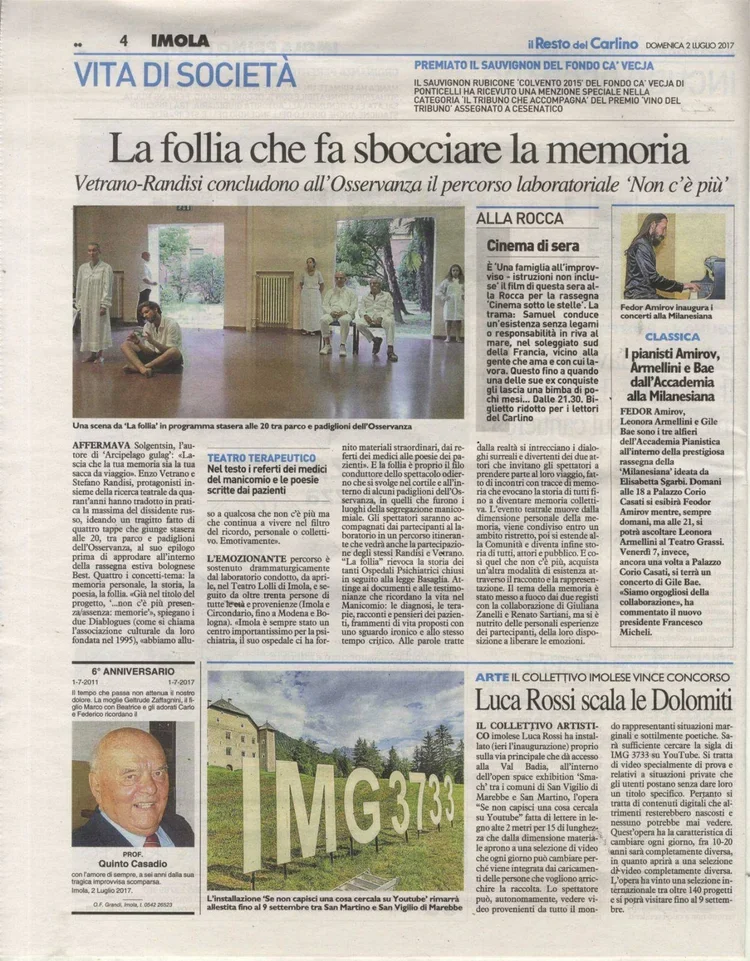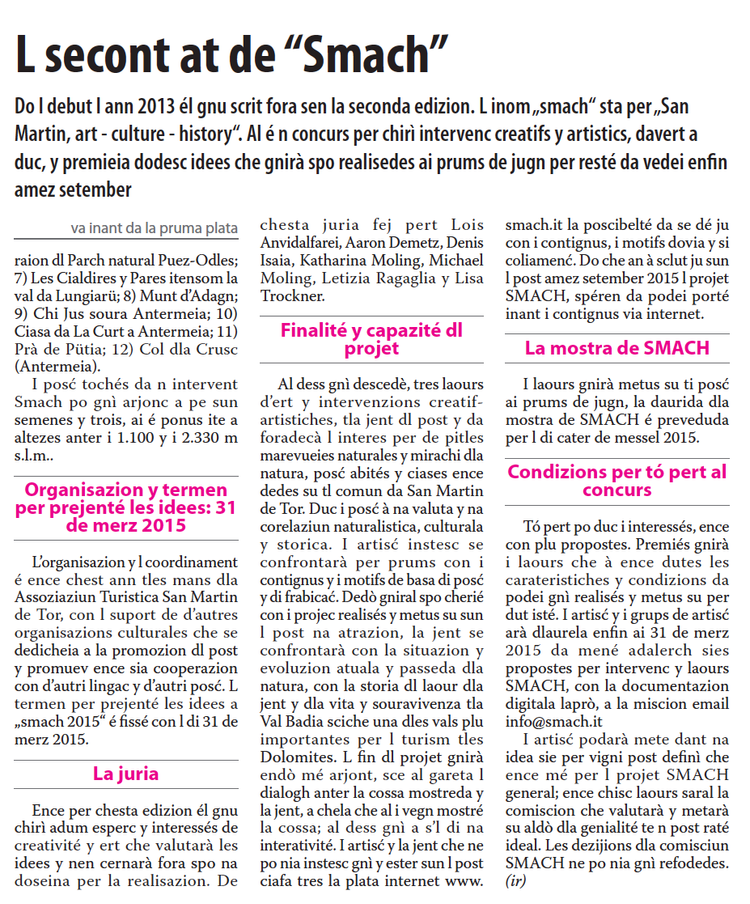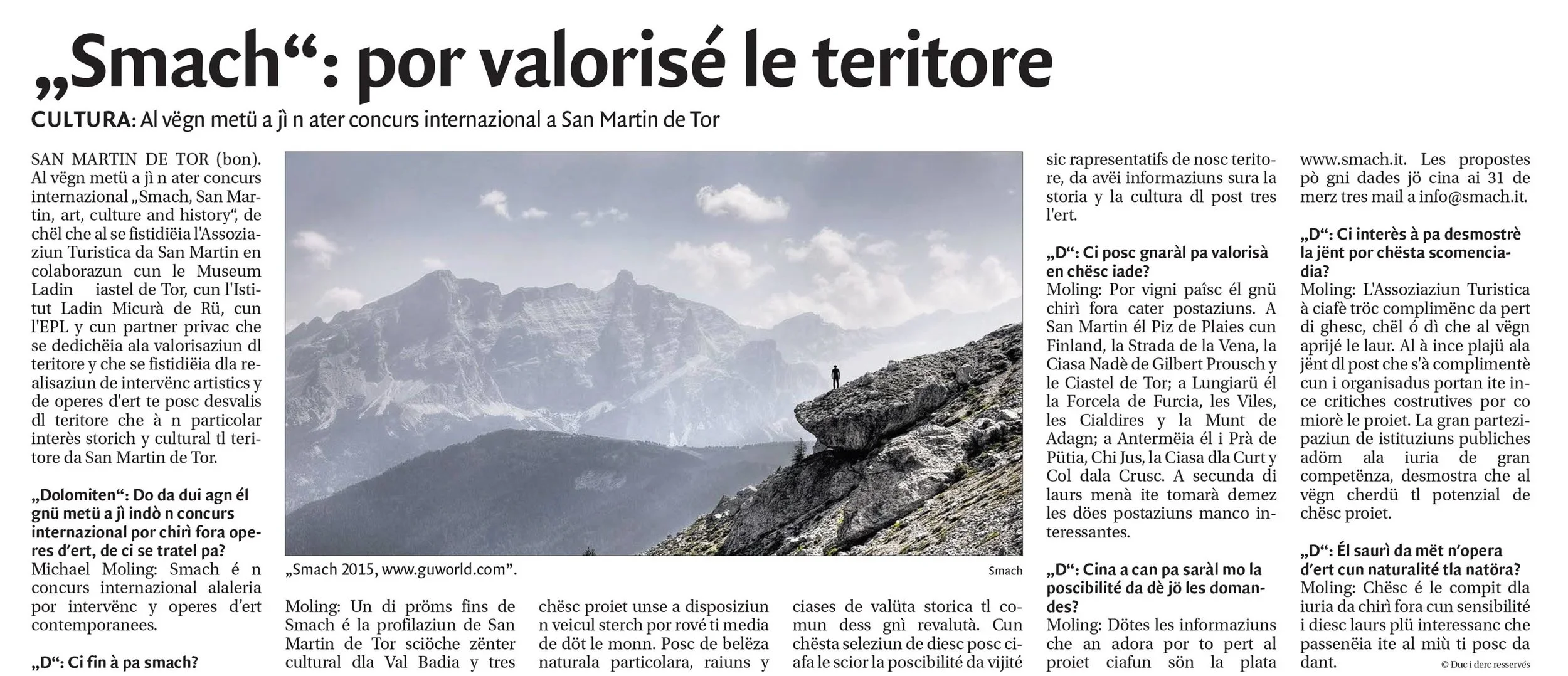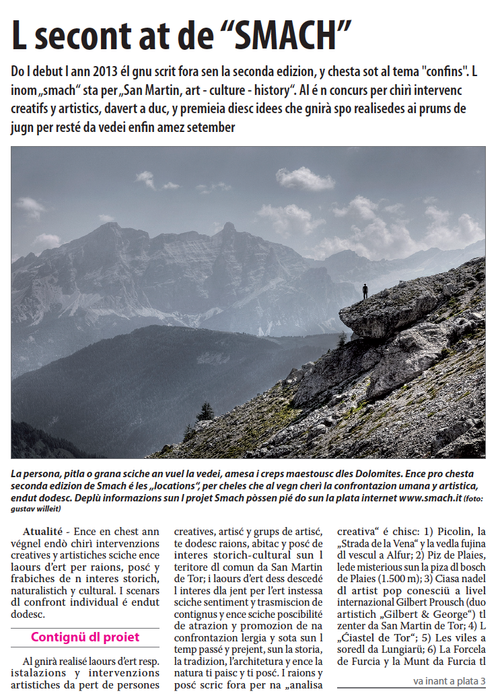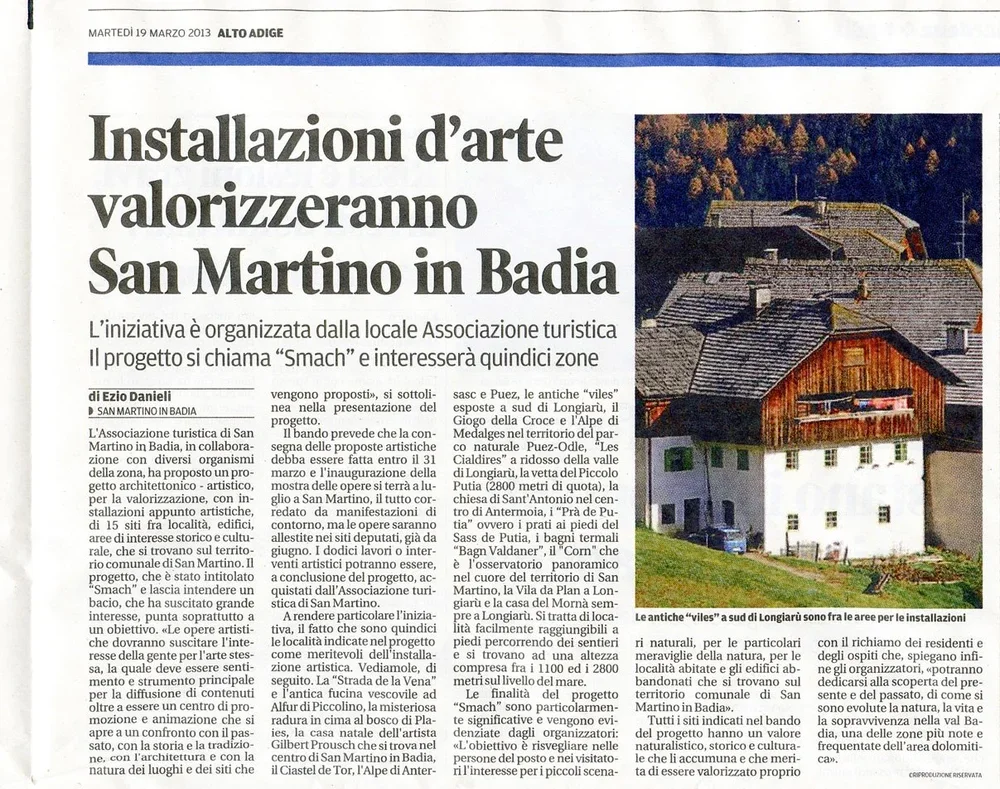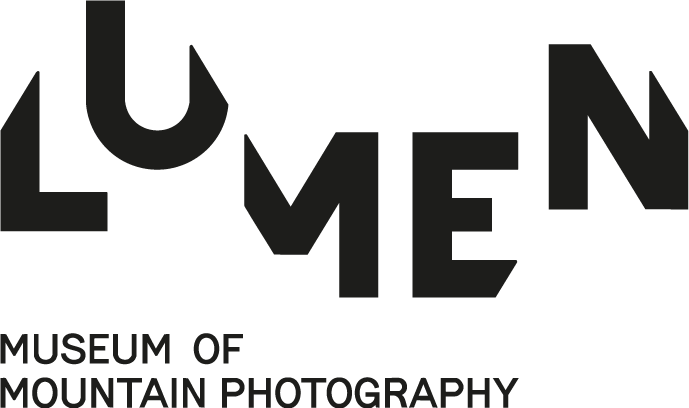Constellation of Art, Culture and History in the Dolomites
At a time when contemporary art was increasingly confined to sterile exhibition spaces, detached from everyday life, a small group of cultural promoters embarked on an alternative path—one that sought to reintegrate artistic practice within a living, identity-rich territorial fabric. It was from this vision that SMACH took shape among the peaks of the Dolomites: a project both discreet and ambitious, far from urban centers, overcrowded museums, and established cultural institutions.
The dynamic and energetic acronym SMACH stands for San Martin Art, Culture and Heritage. From the outset, this lexical choice declared its intentions: to consider art not as an isolated entity but as an integrated expression of a place’s tangible and intangible culture.
A Contemporary Art Laboratory in the Dolomites: Identity, Landscape, and Community
SMACH was born in 2012 as an initiative of a group of young people from Val Badia, driven by the desire to explore key topics such as art, the environment, tourism, and culture.
From its inception, SMACH has stood out for its ethical, ecological, and relational approach. Where the curated works, are conceived with respect for the environment, establishing a non-invasive relationship with the landscape and encouraging critical reflection without imposing assertive positions. Here, the landscape is not a mere backdrop, but a co-protagonist of the artistic process.
What began as a local cultural repositioning effort has since evolved into an internationally relevant art initiative, attracting participation from numerous countries and transforming San Martino in Badia—and all of Val Badia—into an Alpine laboratory of experimentation and dialogue between contemporary art and cultural heritage.
SMACH’s distinct strength lies in its format: a site-specific biennale set not in conventional museums but throughout the mountainous landscape of Val Badia. Every two years, an international open call invites artists to propose works that engage deeply with the natural and cultural fabric of the area—projects that don’t just adorn the landscape but question, reflect on, or even challenge it, always with sensitivity and respect.
SMACH continues to embrace an inclusive ethos, welcoming artists from all backgrounds based on the strength of their ideas, not formal qualifications. Its mission is to offer alternative interpretations of Alpine life and landscape, presenting contemporary art as a means to renew our understanding of local heritage. As co-founder Michael Moling puts it:
“We believe in the power of thought and in the impact a work of art can have on this land.”
Artworks are placed in carefully chosen locations—often symbolically rich or ecologically protected sites—where they interact with the layered histories of the land. In this exchange, the landscape shapes the art, while the art reawakens our perception of the landscape.
Visitors must walk to encounter the works—SMACH is not visited, it is traversed. This physical engagement becomes an aesthetic and political gesture, inviting a slower, more embodied experience of art.
In addition to the Biennale and the Art Park, the vision of SMACH envisages a new third sub-project dedicated exclusively to the social value of tangible and intangible cultural heritage. This new objective is in line with the FARO Convention of 2020 and will be accompanied by the creation of a cultural heritage community of the Val Badia.
An Alpine Cultural Ecosystem in Transformation
Since its founding, SMACH has gradually established itself as a complex and dynamic cultural ecosystem, deeply rooted in the Dolomite landscape while oriented towards relational and transnational dimensions. Moving beyond its initial identity as a contemporary art biennial, SMACH has become a polyphonic platform that integrates exhibitions, educational practices, participatory projects, and decentralized forms of territorial research.
The project's impact is not measured by the number of installed artworks or organized events, but by the connections activated, the energies mobilized, and the formative processes initiated. Every artist, volunteer, student, and visitor who has participated in SMACH's activities contributes to a mosaic of experiences that continually shapes and redefines the project’s identity. SMACH serves as a mediator of exchange and encounter: immersing creatives and tourists alike in the local community with an experiential and relational proximity that favors authentic human connections and builds understanding, respect, and kindness towards the land, the culture, and the people.
This evolution has followed an organic and non-linear path, driven by a consistent openness to listening and transformation. Far from monumental or spectacular logics, SMACH has built a cultural presence based on discretion, proximity, and active engagement with local communities and visitors. Its strength lies in the absence of a fixed center: SMACH is not identified with a building or specific location, but with a diffuse network of human relationships and a collective intelligence capable of generating original content and generative contexts.
SMACH is both a promise fulfilled and a horizon in the making. It is concrete proof that even in peripheral and marginal areas, far from major urban centers, it is possible to generate culture in ways that are radical, authentic, and globally connected. Perhaps it is precisely in the silence of the mountain landscape that SMACH reveals its deepest vocation: that of a culture that does not need to raise its voice to generate meaning.
SMACH’s Contribution to the 17 UN Goals
SMACH integrates the United Nations’ 17 SDGs into its operational, artistic, and community strategies. Each goal finds a reflection—directly or indirectly—in SMACH’s approach to sustainability, inclusion, and innovation through culture:
1. No Poverty
SMACH supports local economies by engaging local artisans, youth, and cultural professionals, offering fair compensation and visibility through inclusive projects—particularly in areas with limited economic alternatives beyond tourism.
2. Zero Hunger
While not a core focus, SMACH collaborates with local food producers during events, promoting short supply chains, traditional alpine agriculture, and awareness of food as cultural heritage.
3. Good Health and Well-being
SMACH’s open-air exhibitions and community programs promote mental well-being, connection with nature, and active lifestyles, encouraging walking routes and contemplative experiences in natural settings.
4. Quality Education
Education is central: through its cultural hub, SMACH App & WebApp, workshops, community labs, and school programs, SMACH offers informal, place-based learning opportunities that foster critical thinking, creativity, and heritage knowledge.
5. Gender Equality
SMACH ensures equal opportunities for women and underrepresented groups in curatorial, artistic, and research roles. Gender inclusivity is a pillar of its team dynamics and communication.
6. Clean Water and Sanitation
SMACH respects and highlights the ecological value of water in alpine ecosystems, often integrating water-sensitive locations and narratives into its site-specific installations and environmental ethics.
7. Affordable and Clean Energy
While not an energy producer, SMACH adopts low-impact event design, uses minimal or no electricity in natural settings, and avoids unsustainable power sources in outdoor exhibitions.
8. Decent Work and Economic Growth
SMACH creates meaningful cultural employment in rural areas, offering work to artists, researchers, guides, and technicians. It contributes to a sustainable cultural economy in the Ladin region.
9. Industry, Innovation and Infrastructure
SMACH embraces digital innovation—like the development of the SMACH App/WebApp—and invests in hybrid infrastructures that blend tradition and technology to preserve and share cultural heritage.
10. Reduced Inequalities
By empowering Ladin identity, minority languages, and peripheral communities, SMACH fosters cultural equity and makes marginalized voices visible through inclusive curatorial and research practices.
11. Sustainable Cities and Communities
SMACH directly supports sustainable rural development, cultural regeneration, and community-led placemaking, making art an engine for identity, resilience, and place-based pride.
12. Responsible Consumption and Production
Installations are designed to be temporary, non-invasive, and often biodegradable or locally sourced. SMACH limits waste, avoids unnecessary infrastructure, and fosters circular design thinking.
13. Climate Action
SMACH raises awareness of the climate crisis in alpine environments by using art to engage with ecological fragility, water scarcity, and biodiversity loss, helping audiences reconnect with natural landscapes.
14. Life Below Water
Though not marine-focused, SMACH touches on this goal conceptually by fostering critical thinking and referencing the Dolomites' geological history as ancient coral reefs, making visitors reflect on Earth's deep-time transformations.
15. Life on Land
SMACH respects protected natural areas, minimizes ecological impact, and fosters a deep connection with mountain landscapes. Artworks often highlight endangered ecosystems and biodiversity.
16. Peace, Justice and Strong Institutions
Through community participation and cultural dialogue, SMACH strengthens democratic engagement and supports social cohesion. It promotes art as a peace-building tool across generations and cultures.
17. Partnerships for the Goals
SMACH actively collaborates with museums, municipalities, EU projects, schools, NGOs, and international artists, building a network of cooperation that brings cultural sustainability to life.
SMACH translates the SDGs into place-based, community-rooted, and art-driven action. It bridges tradition and innovation, ecology and identity, creating a replicable model for sustainable cultural development in fragile territories. Through bottom-up engagement and visionary programming, SMACH proves that art can do more than inspire—it can transform.
Organs of the Association
-
The Assembly is the sovereign organ of the Association.
-
Michael Moling is the acting president.
-
The Board of Directors is acting with all the faculties necessary to administer the Association. The Board of Directors can carry out any action and take all the decisions for the achievement of the purposes set out in the satute. The Board is made up of: Maria Anvidalfarei, Alessia Clara, Loris Clara, Fabian Feichter, Adriana Ghimp, Marco Anvidalfarei, Silvia Baccanti, Phi Mer, Michael Moling and Gustav Willeit (vice president).
-
The Scientific Committee (CS) is the think tank that joins the board of the ODV SMACH Association to ensure consistency between the objectives of the statute and the operational program already in progress or being defined. The CS also aims to promote new actions and stimulate the cultural activation and protagonism of citizenship. It does so by indicating the guidelines for innovation, replicability and sustainability of present and future processes and by deferring the monitoring and analysis of the final results. Furthermore, the CS will support the SMACH association's steering committee in the elaboration of project development proposals and will be able to act as an interface with the artistic-scientific community. The CS is made up of:
Lois Anvidalfarei, artist
Roberta Dapunt, poet
Katy Moling, curator and director of Museum Ladin Ciastel de Tor
The director of the Istitut Ladin Micurá de Rü
Valeria Pica, art historian and museologist
Sonia Tucci, archaeologist, scientific director of the Museo Civico Etrusco Romano di Trevignano Romano
The documentary of SMACH 23
https://michael-kalb.de/portfolio/elevated-art/
Contemporary art embedded in the spectacular mountain landscape of the Dolomites. Who creates something like this? And why? A film about the man behind SMACH – an exhibition that is anything but barrier-free.
Production: Michael Kalb
Direction: Timian Hopf
Cinematography: Toni Bihler
Second Camera: Patrick Steger & Timian Hopf
Sound Design and Music: Robert Nogler
Colour Grading: Fabian Spang
Editor: Milena Holzknecht
Editor (25-minute TV Version): Martine de Biasi
Producer Michael Kalb took the initiative to document the SMACH 2023 Biennale over the course of an entire year, offering an unfiltered and authentic look at all aspects surrounding a public art biennial. The film was awarded at the Dutch Mountain Film Festival in 2024.
Discover more…

